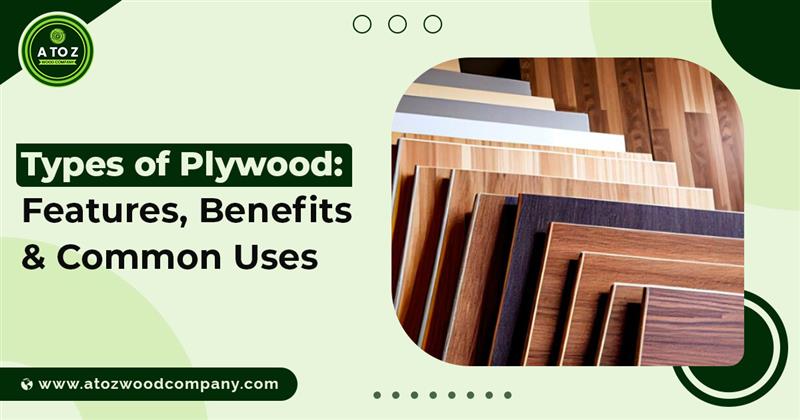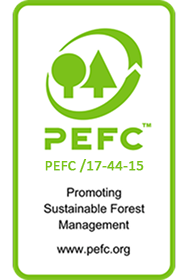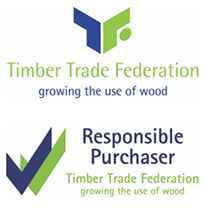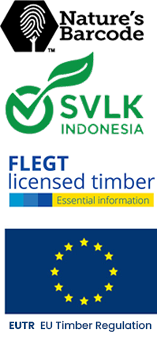It is one of the most widely used engineered wood products in construction, furniture making, and interior design. Its durability, affordability, and versatility make it a top choice for homeowners, contractors, and architects alike. However, not all plywood is the same. There are different types of plywood, each designed for specific purposes, strengths, and environments.
In this guide, we’ll break down the main types of plywood, their features, benefits, and common uses, so you can make an informed decision when buying.
What is Plywood?
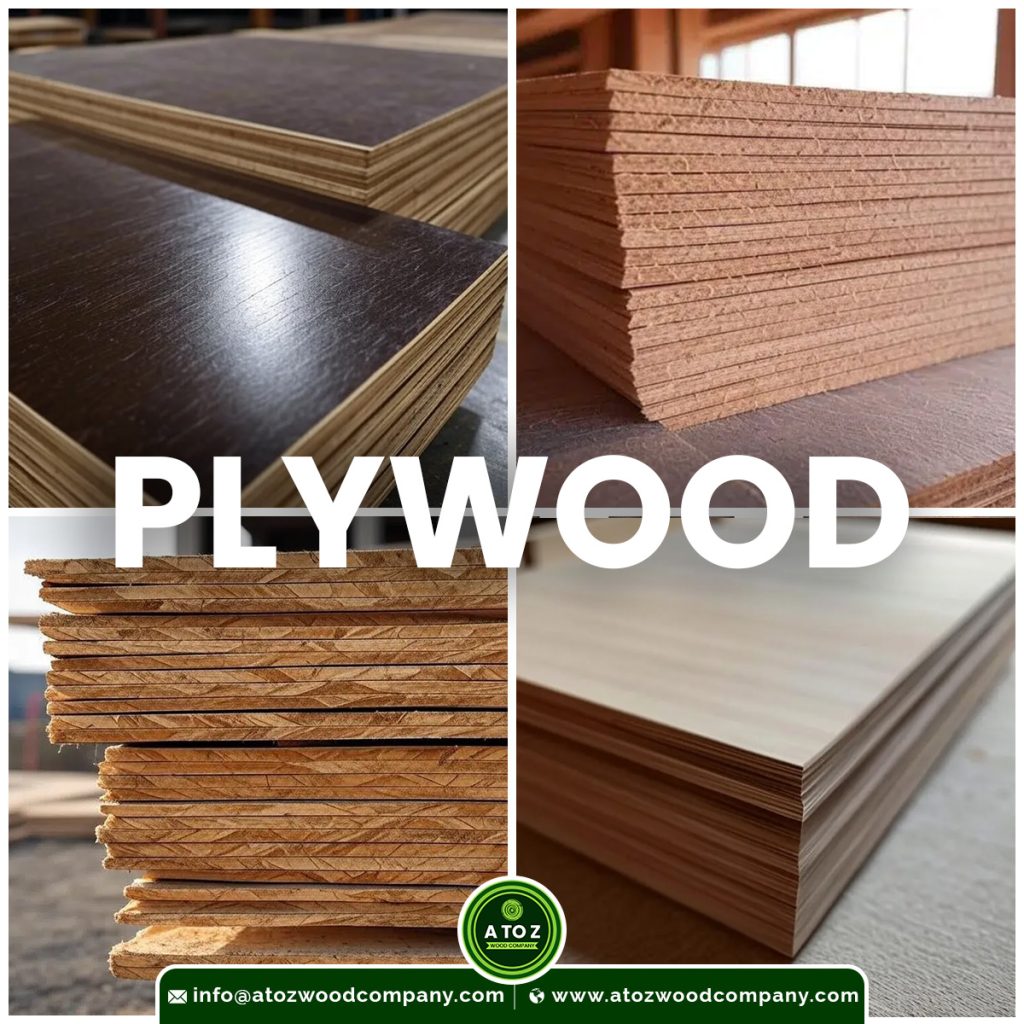
It is a manufactured wood panel made by gluing together thin layers of wood veneers, also called plies. These plies are stacked with their grains running at right angles to each other, which gives plywood its strength and dimensional stability.
The type of plywood depends on:
- The wood species used (hardwood or softwood).
- The type of adhesive.
- The grade and thickness.
- The intended application (interior or exterior).
Best Types of Plywood for Interiors and Exteriors
1. Softwood Plywood
It is manufactured using woods like pine, spruce, cedar, and fir.
- Strengths: Lightweight, easy to cut and work with.
- Uses: Roofing, wall sheathing, flooring, subfloors, and packaging.
- Best For: Structural applications where appearance is not the main concern.
2. Hardwood Plywood
It is made from hardwood species such as oak, birch, maple, and teak.
- Strengths: Strong, durable, and resistant to wear and tear.
- Uses: High-quality furniture, cabinetry, interior decoration, and doors.
- Best For: Aesthetic projects requiring strength and smooth finishing.
3. Marine Plywood
Treated to withstand water and moisture exposure.
- Strengths: Highly water-resistant, durable, and resistant to fungal attacks.
- Uses: Boat building, coastal construction, outdoor furniture, bathrooms, and kitchens.
- Best For: Areas prone to moisture and humidity.
4. Exterior Plywood
This plywood is bonded with waterproof glue to resist outdoor conditions.
- Strengths: Weather-resistant, durable, long-lasting.
- Uses: Outdoor furniture, sheds, fences, decks, and construction projects.
- Best For: Projects that will face outdoor weather.
5. Interior Plywood
Designed for indoor applications where exposure to water is minimal.
- Strengths: Affordable, smooth surface, easy to paint or laminate.
- Uses: Furniture, wardrobes, paneling, ceilings, and partitions.
- Best For: Indoor furniture and decorative applications.
6. Flexible Plywood (Bendable Plywood)
Also known as bendy, this type is manufactured for curved designs.
- Strengths: Can bend without breaking, lightweight, smooth surface.
- Uses: Curved furniture, decorative walls, stage sets, and interior design projects.
- Best For: Creative applications requiring curved or non-linear designs.
7. Structural Plywood
It is made to meet strict building codes and safety requirements.
- Strengths: High strength, load-bearing capacity, durability.
- Uses: Building construction, flooring, roofing, and beams.
- Best For: Projects where strength and stability are crucial.
8. Decorative Plywood (Veneer Plywood)
It is covered with a thin veneer of hardwood to enhance aesthetics.
- Strengths: Attractive, smooth finish, customizable.
- Uses: Furniture, wall panels, cabinets, and interior finishes.
- Best For: Stylish interiors where design and appearance matter.
9. Aircraft Plywood
A high-grade plywood made with superior adhesives and hardwood veneers.
- Strengths: Extremely strong, lightweight, flexible, and resistant to heat and moisture.
- Uses: Aircraft manufacturing, vehicles, boats, and specialized machinery.
- Best For: High-performance and high-stress applications.
10. Fire-Retardant Plywood
This type is chemically treated to resist fire and slow down flames.
- Strengths: Fire-resistant, safe for critical buildings.
- Uses: Commercial buildings, kitchens, theaters, and public places.
- Best For: Safety-focused projects.
11. Moisture Resistant (MR) Plywood
Often called commercial plywood, it is resistant to humidity but not waterproof.
- Strengths: Affordable, versatile, and widely available.
- Uses: Indoor furniture, cupboards, and partitions.
- Best For: General-purpose indoor applications.
Key Factors to Consider When Choosing Plywood
When selecting plywood for your project, keep these factors in mind:
- Application – Is it for interior, exterior, or marine use?
- Grade – Choose between A, B, C, and D grades depending on smoothness and quality.
- Thickness – Available from 3mm to 25mm, depending on load requirements.
- Budget – Hardwood and marine plywood are costlier than commercial plywood.
- Durability – Consider resistance to moisture, fire, and pests.
Conclusion
Plywood comes in various types, each with unique properties and applications. From softwood and hardwood plywood for everyday construction to marine, structural, and fire-retardant plywood for specialized uses, choosing the right type ensures durability, safety, and cost-effectiveness.
Whether you’re building a home, making furniture, or working on a commercial project, selecting the right plywood type will make all the difference in the long run.
For sourcing reliable, durable, and eco-friendly plywood, AtoZ Wood Company remains a trusted partner for clients worldwide. Their commitment to sustainable forestry, strict quality control, and global supply capabilities make them the go-to choice for builders, architects, and furniture makers.
 +237 681 25 6934
+237 681 25 6934
